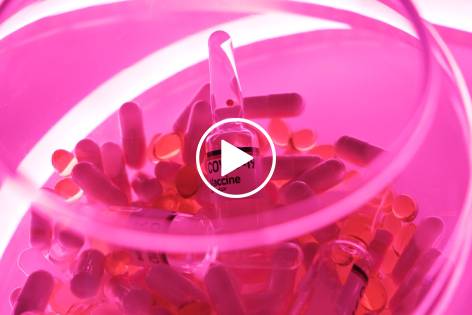
LMU 166 – Vitamin D: The Immune Defender Against COVID-19
Source: Journal Aging Clinical and Experimental Research (May 2020)
Lifestyle Medicine Update (June 4, 2020)
Introduction:
In the battle against viral-induced respiratory infections, vitamin D has emerged as a potent ally, especially in the context of COVID-19. This article explores the critical role of vitamin D, the optimal levels needed for immune defense, regional disparities in vitamin D status, its connection to immunity and lung health, and how to strike the right balance through supplementation. Discover how this unassuming nutrient can strengthen our defenses in challenging times.
The Crucial Role of Vitamin D
In recent times, the spotlight has shifted to an unsung hero in the battle against respiratory infections: vitamin D. As research unfolds, it’s becoming increasingly evident that maintaining optimal levels of this vital nutrient can be a game-changer in our defence against viral-induced respiratory tract infections, including the dreaded COVID-19.
The Vitamin D Threshold
To understand the significance of vitamin D, it’s essential to establish a baseline. Studies have shown that individuals with a blood vitamin D level above 75 or 80 nmol/L (and below 140 nmol/L) are better equipped to prevent viral-induced respiratory tract infections or mitigate their severity if they do occur.
The European Calcified Tissue Society Working Group has defined “severe vitamin D deficiency” as a blood vitamin D level below 30 nmol/L. To put things in perspective, an ideal vitamin D value falls between 80 and 140 nmol/L, offering a robust shield against infections.
Regional Disparities in Vitamin D
The Seneca study shed light on vitamin D levels in different regions. It revealed that older individuals in Spain and Italy had average vitamin D blood levels of 26 nmol/L and 28 nmol/L, respectively. Contrast this with Nordic countries boasting levels of 45 nmol/L or higher. In Switzerland, nursing home residents registered an average vitamin D level of 23 nmol/L, while a staggering 76% of Italian women over 70 had vitamin D levels below the 30 nmol/L deficiency threshold.
What’s striking is the correlation between these countries with lower vitamin D levels and a high number of COVID-19 cases. Moreover, the elderly, who are most susceptible to severe COVID-19 outcomes, tend to have even lower vitamin D status due to decreased sun exposure and declining skin synthesis capability with age.
The Sunlight Connection
Sunlight plays a pivotal role in vitamin D synthesis in our skin. Southern European countries, known for preferring shade in the intense sun, coupled with darker skin, witness reduced skin production of vitamin D compared to their Northern European counterparts. In the north, where sunlight is scarce for a significant portion of the year, vitamin D supplementation and fortification of dairy products are commonplace practices.
Vitamin D and Immunity
The relationship between vitamin D and immunity is multi-faceted. Various immune cells rely on vitamin D to defend against harmful viruses and bacteria effectively. Moreover, adequate vitamin D levels help modulate immune responses, preventing immune cells from overreacting and triggering a cytokine storm – a life-threatening event often responsible for organ failure in severe infections.
The Lung Defender
In addition to its role in immunity, vitamin D also emerges as a crucial player in lung health. It regulates the function of Angiotensin Converting Enzyme-2 (ACE2) enzymes in the lungs, acting as a barrier against highly virulent and destructive respiratory tract infections. This newfound understanding underscores the importance of maintaining optimal vitamin D levels, especially during the COVID-19 era.
Striking the Vitamin D Balance
The key question now is how to strike the right vitamin D balance. For most individuals, aiming for a blood vitamin D level between 80 and 140 nmol/L is ideal. Achieving this can often be as simple as taking 1,000 to 3,000 IU of vitamin D per day.
However, it’s crucial to approach vitamin D supplementation with caution and under the guidance of a healthcare professional. Everyone’s needs are unique, and factors like autoimmune diseases or certain cancers may necessitate higher vitamin D levels. Regular monitoring through blood tests ensures that you stay within the optimal range.
Understanding Vitamin D Measurements
In some instances, blood panels express vitamin D levels in ng/ml rather than nmol/L. To align with this convention, the sweet spot to target is between 32 and 56 ng/ml.
Conclusion
vitamin D is a formidable ally in our ongoing battle against respiratory infections, especially COVID-19. By maintaining optimal vitamin D levels, we fortify our immune defences and bolster our lung health. As we navigate these challenging times, let us remember the power of this unassuming nutrient and harness it to protect ourselves and our loved ones.
Reference:
- Petre Cristian Ilie, Simina Stefanescu, Lee Smith. The role of vitamin D in the prevention of coronavirus disease 2019 infection and mortality. Aging Clinical and Experimental Research, 2020. [Read the Study](https://link.springer.com/article/10.1007/s40520-020-01570-8)
Dr. Meschino
In May 2020, an updated report was published in the journal Aging Clinical and Experimental Research, which highlighted the increasingly strong link between low vitamin D levels and increased risk of death from Covid-19. The researcher explains that The European Calcified Tissue Society Working Group has defined “severe vitamin D deficiency” as a blood vitamin D level lower than 30 nmol/L. So, anything below 30 nmol/L is considered a severe deficiency of vitamin D. Remember that an ideal value is between 80 and 140nmol/L.
The Seneca study showed that the average vitamin D blood level in older individuals in Spain is 26 nmol/L and in Italy, it’s 28 nmol/, whereas higher levels of 45 nmol/L are found in Nordic countries. In Switzerland, the average vitamin D level is 23 nmol/L in nursing homes and in Italy, 76% of women over 70 years of age have vitamin D levels below 30 nmol/L. These are the countries with a high number of cases of COVID-19 and the aging population is the group with the highest risk for morbidity and mortality from the Covid-19 virus. The researchers state that vitamin D deficiency is a major public health problem worldwide in all age groups, but vitamin D status deteriorates with age, above 70 years of life, due to decreased sun exposure and decreased ability of the skin to synthesize vitamin D from sunlight exposure. Vitamin D status is especially poor in institutionalized people (people in nursing homes) 75% of them being severely vitamin D deficient, with blood vitamin D levels below 25 nmol/L. The researchers go on to state that the Southern European countries have lower blood levels of vitamin D, compared to Northern European countries because of decreased sun exposure (prefer the shade in the strong sun) and they tend to have darker skin, compared to Northern Europeans), which reduces the amount of vitamin D made in the skin upon exposure to sunlight. Northern Europe’s average vitamin D blood levels are higher because they know that they don’t get adequate sunlight enough of the year to synthesize required amounts of vitamin D to prevent osteoporosis, so they consume cod liver oil and they take vitamin D supplements (which are very inexpensive) and they fortify their milk and milk products with vitamin D (Finland).
Regarding immunity, vitamin D is required by various immune cells to ward off and fight dangerous viruses and bacteria. As well, low vitamin D blood levels enable certain immune cells to over-react to viruses by creating the cytokine storm, which is often the life-threatening event that causes organ failure and death. Vitamin D also modulates the function of the ACE enzymes in the lungs (Angiotensin Converting Enzyme-2), helping to prevent the virus from mounting a highly virulent and permanent lung-damaging respiratory tract infection in the lungs. I believe that it is just common sense at this point to ensure that your blood vitamin D level is above 75 or 80 nmol/L and below 140 nmol/L. If you have an autoimmune disease or you are fighting certain types of cancer your doctor may want to see higher blood vitamin D levels than 140 nmol/L, but for most people between 80 and 140 nmol/L is the sweet spot to shoot for. Most people can achieve this value by taking 1,000 to 3,000 IU of vitamin D per day.
But you should get your blood vitamin D level assessed by your physician to make sure you are getting enough vitamin D each day to achieve a blood level of at least 80 nmol/L but not so much as to go beyond 140 nmol/L unless otherwise indicated by your physician. Some blood panels show vitamin D in ng/ml rather than nmol/L, in which case the sweet spot is between 32 and 56 ng/ml.
I have included the reference for this information in the text below.
References:
Petre Cristian Ilie, Simina Stefanescu, Lee Smith. The role of vitamin D in the prevention of coronavirus disease 2019 infection and mortality. Aging Clinical and Experimental Research, 2020.
https://link.springer.com/article/10.1007/s40520-020-01570-8
Eat Smart, Live Well, Look Great,
Dr. Meschino

Dr. James Meschino
ABOUT THE AUTHOR
Dr. James Meschino, DC, MS, ROHP, is an educator, author, and researcher having lectured to thousands of healthcare professionals across North America. He holds a Master’s Degree in Science with specialties in human nutrition and biology and is recognized as an expert in the field of nutrition, anti-aging, fitness, and wellness as well as the author of numerous books.


